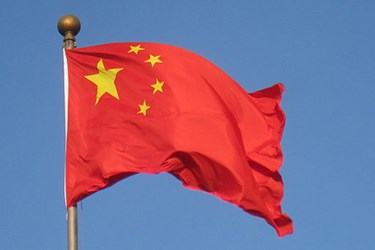Understanding China's Updated Overseas Inspections: A Q&A with Gert Bos and Michael Yan
By Zachary Brousseau, Regulatory Affairs Professionals Society

China’s National Medical Products Administration (NMPA) has stepped up overseas inspections in recent years, and manufacturers looking to market products in China must be prepared for potential visits from Chinese inspectors.
Gert Bos, PhD, FRAPS, executive director and partner with Qserve Group, addressed the topic during a session at the recent RAPS Regulatory Conference Europe in Brussels. Here, Bos and his Qserve China colleague, Michael Yan, answer questions about China’s inspections program and provide regulatory guidance for medtechs aiming to do business in China.
What led China to increase foreign inspections over the past few years?
In the past, the limited availability of foreign inspectors forced China to focus on large companies and companies making high-risk, long-term implants. With an increased budget allowing for rapid increase of the available inspector pool, we see the scope widening, and many more companies are and will be subject to overseas inspections. As other leading regulatory agencies around the world have similar oversight systems in place, China intends to continue its rapid progression in the field of regulatory compliance, ensuring imported products are safe for the Chinese population.
NMPA has performed quality system audits and good manufacturing practice (GMP) inspections for many years within China. According to the nation’s regulations, overseas manufacturers are supposed to be subject to the same level of oversight. As China’s government significantly builds up its professional inspection team, both domestic and overseas manufacturers are expected to receive more frequent and stricter inspections in the future.
Issued and effective as of Dec. 26, 2018, Administrative Measures for Overseas Inspections of Drugs and Medical Devices has adjusted some details to be aligned with domestic practice, but there continue to be some differences in practice. For example, the “double blind” arrangements of unannounced inspections performed in China will be very difficult to implement for overseas inspections, due to the need for visa applications and logistic arrangements.
What significant changes did China make to its foreign inspection process with the release of these updated guidelines?
In principle, the guidance did not add further requirements. It just regulates the procedure that gives an interpretation on the regulatory requirements. However, analyzing some details of the regulatory framework being followed up by the guidance reveals several points worth mentioning:
- The China agent’s responsibilities were added in article 10; specific requirements of the authorization and its documentation requirements were listed in Annex 2, as was the stipulation to maintain alignment with new regulations via China agent.
- Scope extension: overseas sites or subcontractors for domestic products will now also need to follow this regulation.
- The site-master file (SMF) is separated into a pharmaceutical version and a medical device version.
- A new Annex (5) has been added covering the format of the “oversea inspection advanced notice.” It is to be issued after reviewing the SMF and is used to notify the manufacturer of the inspection plan, including location, timing, etc. An application for delay (with proper reason) must to be submitted by the manufacturer within 10 working days after receiving the notice.
- Complaints, whistleblowing, or similar clues that might indicate a violation might also lead to an inspection.
- The number of inspectors per visit might be increasing.
- Some adjustments have been made to the response timelines.
- A result of minor non-conformities will no longer be classified as “meeting the requirement.”
- ‘Refused’ or ‘unable’ to notarize documents has been added to the scenario of noncooperation, which will be classified as “not meeting the requirement” directly.
- A traceability system requirement is now clearly required in article 32.
What criteria does China's NMPA use to select sites for foreign inspection?
Until sufficiently trained personnel are available to inspect all companies exporting products to China, the decision of which foreign sites to inspect will be risk-based, considering the risk factors identified from registration approval: surveillance inspection, testing, complaints and whistleblowing, vigilance, etc.
What are the possible results of an inspection?
If noncompliance is discovered, it could lead the NMPA to implement “risk control measures.” These include interviewing the holder, ordering corrections within a specified time limit, issuing warning letters, suspending import customs clearance filing, suspending the specific device’s import, suspending sales and use, supervising product recall, and even revoking import approval. In addition, NMPA may schedule further inspections.
What information, if any, is made publicly available about inspection results?
The inspection result, mainly addressed in Annex 6, will be shared with the public on the NMPA/CFDI website. Publicly available information is likely to include details of any defects and manufacturer/agent information.
What do we know about results of previous inspections and what issues have been identified as problematic?
The results of individual assessments are available in Chinese on the NMPA website. At this moment, it is a bit early in the process to analyze trends in the dataset.
What are the most important things companies need to know about NMPA's procedure for overseas inspections?
NMPA will notify the China legal agent in advance and give a rough timeline. As the inspection time approaches, final dates will be confirmed between NMPA and foreign companies through discussions. Key elements for companies to consider in preparation include:
- Start learning China’s regulations and standards as soon as possible; do not leave this responsibility solely in the hands of your China team or China agent!
- Facilitate teamwork among the quality, regulatory affairs, R&D, and clinical teams, as well as the China agent.
- Staff responsible for managing the supply chain need to be involved, as they also will have to accept the inspections; this needs to be contractually agreed upon.
What are the key differences between NMPA inspections and inspections conducted by European and US authorities?
First, one needs to consider the different culture, regulations, and different understanding of the standards. Next, the scale and focus might differ. For example:
- Three or more inspectors, possibly with additional observers, will perform the inspection in parallel. Make sure you have enough translators and moderators onsite.
- The inspection team is expected to have a thorough knowledge and relevant background — including tech-file reviewer, testing engineer, etc. — in addition to the GMP inspector. Don’t forget the bigger team behind the audit; inspectors may check with the headquarters team after the day’s work if they’re not sure of some issues, so be sure to give reasonable justifications for anything that may be seen as questionable.
- Inspectors may take pictures or videos for use as evidence.
- Inspectors may take samples themselves or ask manufactures to ship samples to NMPA for further testing.
How can device makers address language and cultural differences with Chinese inspectors?
Inspections will be performed in the Chinese language, although some inspectors may speak fluent English. Manufacturers must be well-prepared, making available key resources, accounting for necessary documents and logistics, and securing good translators with proper QA/RA/R&D and relevant device backgrounds. Mock inspections combined with on-site training typically help a lot.
What are some key "dos and don'ts" for companies selected for inspection by NMPA?
The top eight might look as follows:
- Don’t take the inspection personally.
- Don’t be adversarial.
- Don’t try to control the inspection — it is the regulators’ inspection.
- Communicate any special circumstance or needs.
- Ask questions if you are unsure of something.
- Make corrections if possible. If the inspector(s) can’t find documents, try to locate and present them. If you can’t find something, say so.
- If you can’t make corrections, let it be.
- Be mindful that the Chinese cultural expectation is to respect the auditor.
What should companies do if they don't pass the inspection?
If non-conformities are raised:
- Provide a statement or explanations within 10 working days after receiving the result notice from NMPA if there’s any disagreement.
- Provide the progress of the corrective action preventive action (CAPA) — or a detailed CAPA plan, if it is not possible to finish correction in time — within 50 working days after receiving the result notice.
- Apply for relief from NMPA’s risk control measures after CAPA is performed.
- Prepare for the additional inspection if needed.
- Recall products where appropriate.
- Ensure knowledgeable support to work on CAPA closure, and to smooth communication with the inspection team during follow-up.
About The Respondents, Author
 Michael Yan is a regulatory affairs expert at QServe Group, as well as a member of the Regulatory Affairs Professionals Society (RAPS), with over 12 years of experience in the regulatory affairs sector. He is part of QServe’s Chinese Regulatory Affairs team, providing CE certification and CFDA registration. As an RA specialist, Michael has strong experience with product registration for CFDA, FDA and CE certification. He has a B.Sc. in International Economy Trade and a B.Sc. in Pharmacology.
Michael Yan is a regulatory affairs expert at QServe Group, as well as a member of the Regulatory Affairs Professionals Society (RAPS), with over 12 years of experience in the regulatory affairs sector. He is part of QServe’s Chinese Regulatory Affairs team, providing CE certification and CFDA registration. As an RA specialist, Michael has strong experience with product registration for CFDA, FDA and CE certification. He has a B.Sc. in International Economy Trade and a B.Sc. in Pharmacology.
 Gert Bos is a RAPS fellow and executive director and partner with Qserve Group. He is an expert in European regulations with 15 years of experience as an auditor, product reviewer and regulatory specialist. Gert has led the Notified Bodies in Brussels for years and has supported regulatory debate within the EU Commission, the EU Parliament, and the EU Council of Ministers. He has a PhD in biomaterial sciences and post-doctoral degrees in the controlled release of drugs and gene therapy.
Gert Bos is a RAPS fellow and executive director and partner with Qserve Group. He is an expert in European regulations with 15 years of experience as an auditor, product reviewer and regulatory specialist. Gert has led the Notified Bodies in Brussels for years and has supported regulatory debate within the EU Commission, the EU Parliament, and the EU Council of Ministers. He has a PhD in biomaterial sciences and post-doctoral degrees in the controlled release of drugs and gene therapy.
Zachary Brousseau is Senior Communications Manager at the Regulatory Affairs Professionals Society.
